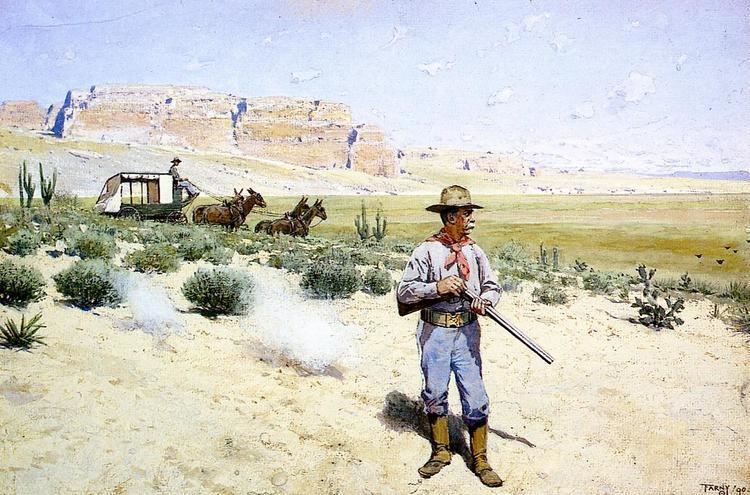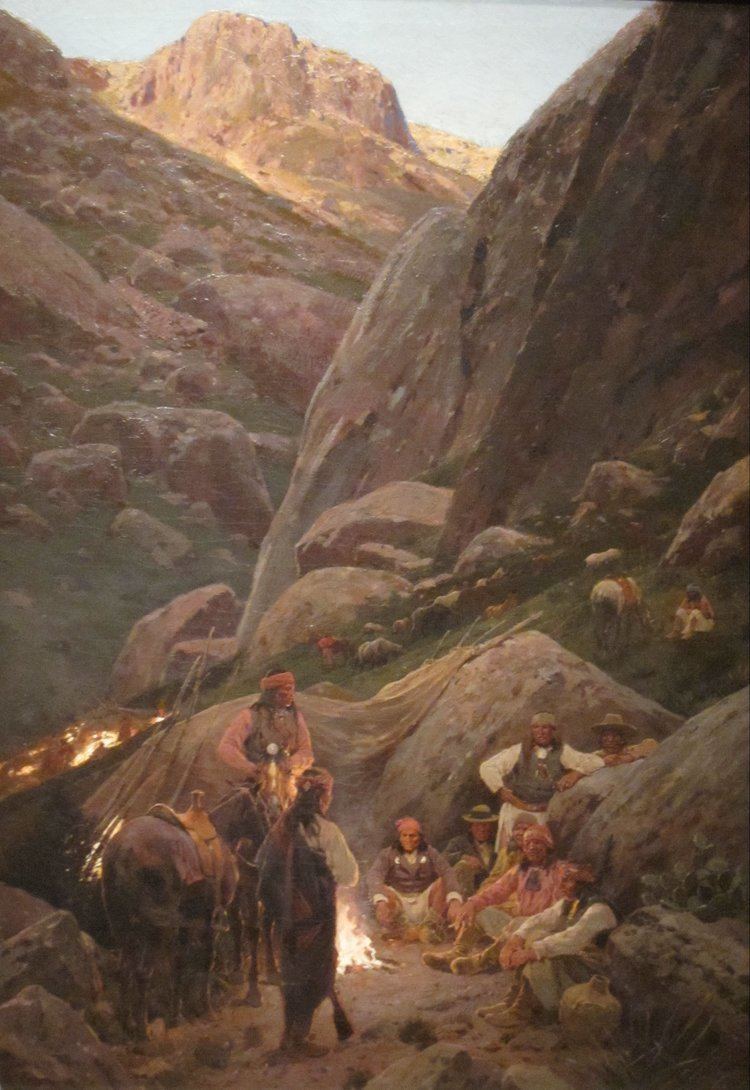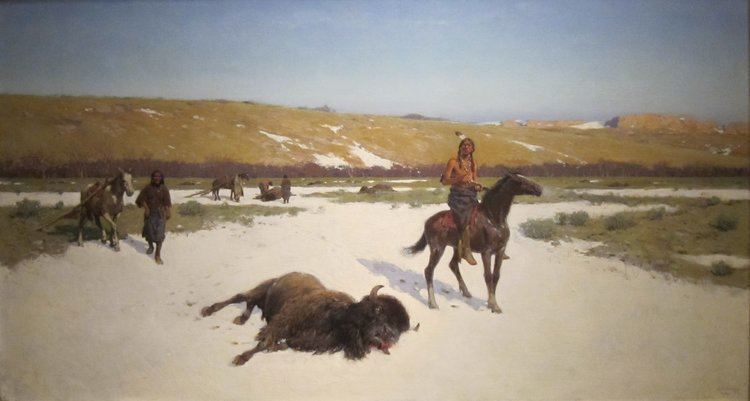Name Henry Farny | Education Woodward High School | |
 | ||
Died December 23, 1916, Cincinnati, Ohio, United States | ||
Henry farny cie paris france fiddle
Henry François Farny (15 July 1847 Ribeauvillé – 23 December 1916) was a French-born United States painter and illustrator. His work was centered on the life of Native Americans in the 19th-century United States.
Contents
- Henry farny cie paris france fiddle
- Apache The Shadows
- Biography
- Style
- Legacy
- Artworks
- Additional reading
- References

Apache - The Shadows
Biography

Farny's family left France in 1853 to emigrate to the United States. The family moved to Warren in Pennsylvania, near a Seneca reservation. As a child he learned the lore of the woods from Seneca Indians, who came from their reservation in New York state to hunt in the neighborhood where his father lived. In his boyhood he was fond of covering the walls of his father's board-house with pictures of animals, birds and Indians, which he scratched with nails or framed by aid of burnt sticks.

Around 1859, the Farny family moved to Cincinnati, Ohio. Attracted by painting and drawing, the young man became an illustrator for magazines and books for children. When he was 18 years old, Harper's Weekly published a double page view of Cincinnati he made.

Between 1867 and 1870 he took private lessons from Albert Bierstadt in Düsseldorf. By the time Farny had arrived at Düsseldorf, and began attending Düsseldorf academy in the late 1860s the Düsseldorf school of painting had already begun to lose its once high acclaim amongst most of the American populace.
One part of America where this was not the case was in Cincinnati, Ohio where the realist objectives taught there were still being held in high esteem. Despite this, upon his return to Cincinnati in 1870 Farny, who had been studying abroad, came home to a minimally responsive demand by Cincinnatians for his paintings. He used his new found skills in the service of poster painting and other odd jobs. In 1873 this all changed when he was commissioned by the chamber of commerce to depict in drawing the different stages of pork packing in Cincinnati.
In 1881, inspired by the developing market for Indian paintings, Farny traveled up the Missouri River, making sketches, taking notes and photography, and collecting artifacts. On several more trips West he did the same, until his Cincinnati studio contained enough material for almost any Indian subject he wished to illustrate. Upon his return to Cincinnati, he remarked: "The plains, the buttes, the whole country and its people are fuller of material for the artist than any country in Europe."
About a hundred paintings were inspired by Farny's western trips in the 1880s. Ration Day at Standing Rock Agency, The Song of the Talking Wire, and The Last Vigil are among his most famous. His understanding of the Indian's plight is often apparent in his work.
Farny was one of the founding members of the Cincinnati Art Club and served as its second president from 1892–94.
Theodore Roosevelt once said to Farny: "Farny, the nation owes you a great debt. It does not realize it now but it will some day. You are preserving for future generations phases of American history that are rapidly passing away."
He died in Cincinnati in 1916.
Style
Farny who was an erudite scholar, and student of both Munich and Düsseldorf's school's of fine arts, nonetheless, can be seen, from his works of art to have assimilated the Düsseldorf techniques of a drab styled realism into his paintings. In his depictions of the post civil war era and oppression of Native Americans at the time, Farny masterfully painted confounding situations, such as a perplexed Indian examining a telephone line. This painting entitled (In song of the Talking wire, a major work of 1904) can be interpreted as 'in the struggle against the white man's technology he must succumb' "John Clubbe". This painting along with one entitled Morning of a New Day which shows Native Americans on a snowy hill watching a far away train have gained Farny a reputation of practicing the 'vanishing race' style of painting.
Legacy
Farny's art continues to gain in popularity and most serious public as well as private Western art collections include at least on in them. Recently his Southern Plains Indian Warrior sold at the Bonhoms for £224,097 (US$362,500) - more than three times its original estimated value.
Artworks
Selected artworks
